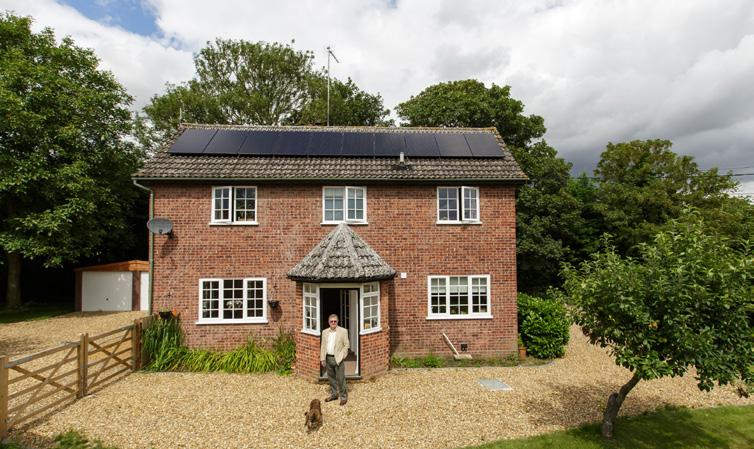The U.K.’s National Grid this week published its Summer Outlook report that revealed it is expecting summer demand for grid electricity to be dragged low, due to the growing amounts of small scale renewable energy installed nationwide.
However, with more and more flexible electricity being fed into the grid from rooftop solar PV applications and vast wind farms, there may be times during the summer when the U.K. has more generation than required, prompting the National Grid to warn that inflexible generators may be forced to reduce their output, in order to balance the system.
This will likely mean that large gas and nuclear plants have to curtail their output to make way for renewables.
“Increased supply and demand variability caused by these periods of low demand and high levels of renewable generation can create operability challenges,” said the report. “As a result, we may need to take more actions to curtail generation and possibly instruct inflexible generators to reduce their output in order to balance the system.”
The report forecasts peak transmission system demand for high summer (if the months between June and August can be called such a thing in Britain) to reach around 33.7 GW, with a minimum of 17 GW – some 700 MW and 600 MW lower than summer 2017, respectively.
Popular content
Summer demand for electricity has been on a downward trajectory for the past few years since renewable energy has grown. The U.K.’s cumulative solar PV installed now stands at more than 13 GW connected directly to local distribution networks, and although growth has slowed the nation is still expected to add a further 1 GW annually for the next few years.
Furthermore, small wind farms dotted across the U.K. are expected to add an additional 5.7 GW of distributed power to the grid, thus pushing gas and nuclear power further down the line as demand for electricity from centralized power stations wanes.
Already, coal’s days appear numbered in the U.K., with mass plant closures and uncompetitive prices against renewables. Gas and nuclear power now lie helplessly in renewables’ sights.
However, more solar and wind power feeding the grid brings its own problems, chiefly those concerning intermittency of power, which makes it hard for the National Grid to predict and manage the electricity it has at hand. This summer will see batteries and other types of energy storage systems incentivized to help manage the grid under the new Enhanced Frequency Response scheme.
This content is protected by copyright and may not be reused. If you want to cooperate with us and would like to reuse some of our content, please contact: editors@pv-magazine.com.


6 comments
By submitting this form you agree to pv magazine using your data for the purposes of publishing your comment.
Your personal data will only be disclosed or otherwise transmitted to third parties for the purposes of spam filtering or if this is necessary for technical maintenance of the website. Any other transfer to third parties will not take place unless this is justified on the basis of applicable data protection regulations or if pv magazine is legally obliged to do so.
You may revoke this consent at any time with effect for the future, in which case your personal data will be deleted immediately. Otherwise, your data will be deleted if pv magazine has processed your request or the purpose of data storage is fulfilled.
Further information on data privacy can be found in our Data Protection Policy.